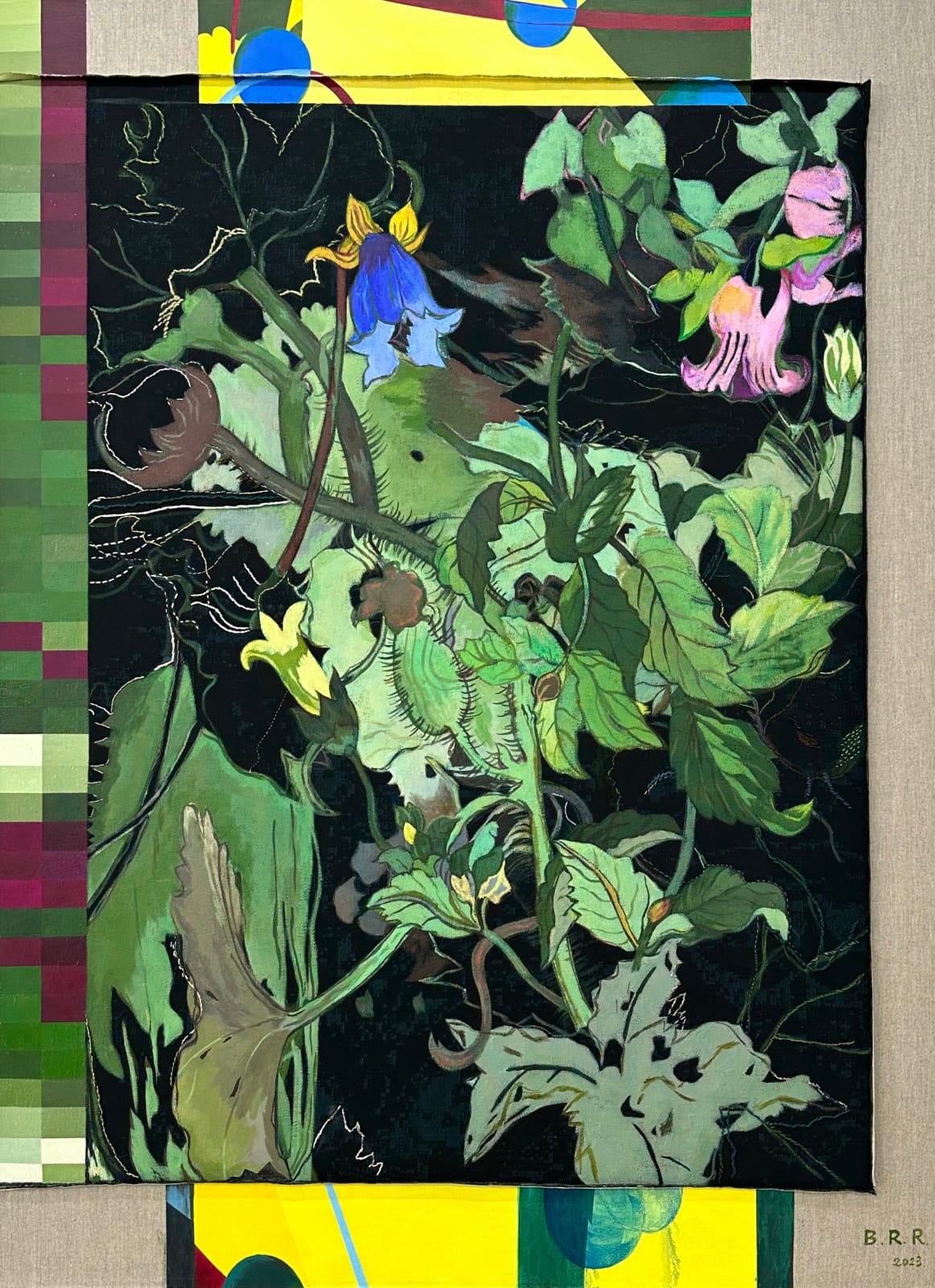Bi Rongrong Chinese, b. 1982
Animal in Two Dimensions—Landscape VIII, 2023
acrylic, oil, and needlework on canvas and cotton Jacquard textile
190 x 140 cm
For the artist Bi Rongrong urban architecture is a source of creative direction, experiment, and self-discovery. Bi investigates cityscapes; observing ornamental structures, billboards, patches of greenery and any other fragment...
For the artist Bi Rongrong urban architecture is a source of creative direction, experiment, and self-discovery. Bi investigates cityscapes; observing ornamental structures, billboards, patches of greenery and any other fragment of urbanisation that can inform her practice. Each one of these elements is translated onto canvas and reimagined in the form of pattern, design and texture. The research into cities and the differing cultural dynamics within them results in a new and original form of urban mindscape. Here the margins dividing human, urban and the natural world are distorted and re-purposed according to an undefinable set of Bi’s internal rhythms and aesthetic rules. ‘Urban’ and ‘city’ are no longer a contained structure or space, but rather an ever-expanding fabric of imagination.
Bi Rongrong employs manual and digital manipulation, and rendering to produce mixed-media works including painting, textiles, thread-work, collage, video animation, and installation. As part of her continuous engagement with contemporary urbanity, she often makes use of mass industrial products like dyes, yarns, and fabrics. Bi mostly avoids a strict planning technique of composition of the canvas, preferring to let experimentation lead her. Yet, the artist tends to initiate the creative process with line drawing, a habit derived from her training in traditional Chinese ‘gongbi’ painting – a style that focuses on a meticulous and highly detailed brush technique.
Bi Rongrong employs manual and digital manipulation, and rendering to produce mixed-media works including painting, textiles, thread-work, collage, video animation, and installation. As part of her continuous engagement with contemporary urbanity, she often makes use of mass industrial products like dyes, yarns, and fabrics. Bi mostly avoids a strict planning technique of composition of the canvas, preferring to let experimentation lead her. Yet, the artist tends to initiate the creative process with line drawing, a habit derived from her training in traditional Chinese ‘gongbi’ painting – a style that focuses on a meticulous and highly detailed brush technique.
